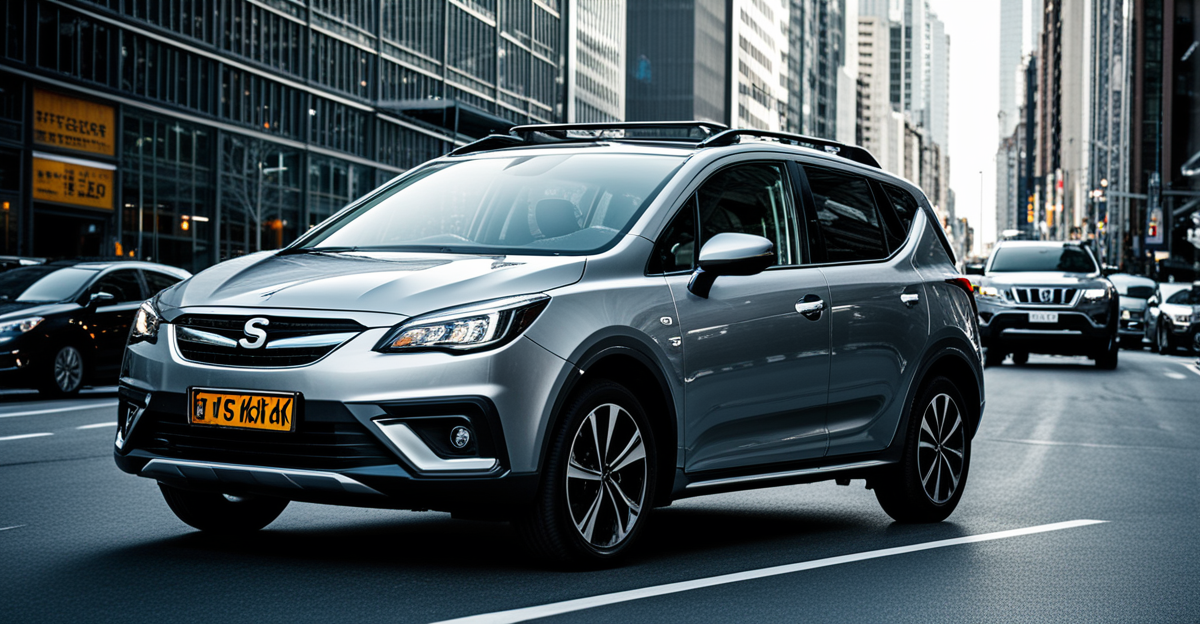How Larger Wheels Influence Safety in Compact City Vehicles
Larger wheels play a significant role in enhancing wheel size safety for compact city cars. One of the most notable impacts is the improvement in vehicle stability. Bigger wheels increase the contact patch with the road, reducing the likelihood of rollovers—a critical advantage in urban environments where sudden maneuvers and stops are frequent. This directly contributes to better compact vehicle urban safety, especially during sharp turns or evasive actions.
Regarding collision performance, larger wheels can affect both braking distance and crash impact absorption. Generally, these wheels support improved braking efficiency due to enhanced grip, which lowers stopping distances in emergency situations. This means city cars equipped with larger wheels demonstrate improved city car crash protection by enabling drivers to react and stop more promptly, thereby reducing collision risk.
Additional reading : Maximize Child Safety: Essential Tips for Seamlessly Integrating Car Seats with Vehicle Safety Features
Larger wheels also influence occupant safety during urban driving. By stabilizing the vehicle and aiding smoother handling, they help minimize the jolts and impacts occupants experience during collisions or abrupt stops typical in city traffic. Additionally, better road grip ensures consistent tire-road contact, crucial for sustaining control and protecting passengers when accidents occur. Therefore, choosing larger wheels contributes directly to increased safety levels across many aspects of wheel size safety in compact city vehicles.
Performance and Handling Improvements in Urban Environments
Upgrading to larger wheels significantly enhances urban driving performance by improving the vehicle’s responsiveness and control. In compact cars, the increased wheel diameter leads to more precise steering inputs, which directly influences compact car handling during tight turns and stop-and-go city traffic. This improvement in maneuverability is crucial in urban settings where narrow lanes and frequent obstacles demand quick and accurate vehicle responses.
Also to discover : Essential Strategies for Keeping Emergency Vehicle Anti-Lock Brake Systems in Top Shape
Comparing standard wheels to larger ones reveals notable differences. Larger wheels provide a broader contact patch, which improves traction during acceleration and cornering. This results in better stability and confidence for drivers performing emergency maneuvers, such as sudden lane changes or abrupt stops. Studies have shown that vehicles equipped with larger wheels demonstrate shorter response times and smoother handling in congested urban scenarios, supporting enhanced wheel size effects on overall performance.
Moreover, larger wheels affect acceleration dynamics. While there can be a slight trade-off in initial acceleration due to increased rotational mass, the benefits in grip and handling often outweigh this. During cornering, larger wheels reduce body roll and improve tire grip, allowing safer navigation of sharp corners commonly encountered in city driving. These factors, combined, contribute to a more secure driving experience tailored to the demands of urban environments.
How Larger Wheels Influence Safety in Compact City Vehicles
Larger wheels significantly enhance wheel size safety by providing greater stability and reducing the risk of rollovers in compact city vehicles. The increased diameter expands the tire’s contact area with the road surface, which directly bolsters compact vehicle urban safety by stabilizing the car during quick turns and sudden stops common in crowded city streets. This stability means drivers can react more confidently to unexpected obstacles, lessening the chance of accidents.
Regarding braking performance, larger wheels often improve city car crash protection by allowing tires to maintain better grip during emergency braking. This translates into shorter stopping distances, a critical factor when navigating busy urban traffic. The enhanced grip also aids in maintaining control, minimizing slips that could otherwise escalate collision severity. Thus, larger wheels serve as a practical safety upgrade, directly influencing how well a city car performs under emergency conditions.
Occupant protection benefits from these improvements as well. By stabilizing handling and improving tire-road contact, larger wheels reduce harsh jolts from sudden stops or minor impacts. This means passengers experience less force during typical urban driving incidents. Combined with improved vehicle control, larger wheels contribute decisively to overall wheel size safety, making them a vital consideration for compact vehicles designed for city use.
How Larger Wheels Influence Safety in Compact City Vehicles
Larger wheels enhance wheel size safety by providing increased stability, which is crucial for compact vehicle urban safety. The bigger contact surface reduces the risk of rollovers during sudden maneuvers typical in city driving. This improved stability allows better vehicle control when avoiding obstacles or reacting to traffic changes, directly boosting city car crash protection.
In terms of braking, larger wheels improve grip, leading to shorter stopping distances. This advancement in wheel size safety is vital in urban areas where quick stops often prevent collisions. Better traction means drivers can maintain control under braking, reducing the chance of skidding or losing direction, which enhances overall compact vehicle urban safety by lowering accident severity.
Occupant protection also benefits from larger wheels. By fostering smoother handling and reducing abrupt jolts, these wheels lessen the impact forces passengers experience during urban collisions. Enhanced stability ensures the vehicle responds predictably, minimizing injury risks and reinforcing city car crash protection. Overall, larger wheels play a pivotal role in raising safety standards for compact vehicles navigating city environments.
How Larger Wheels Influence Safety in Compact City Vehicles
Larger wheels significantly enhance wheel size safety by boosting vehicle stability, which is fundamental to compact vehicle urban safety. Increasing the diameter of the wheels enlarges the tire’s contact patch with the road, directly reducing the risk of rollovers during rapid maneuvers frequent in city traffic. This enhanced stability equips drivers to better maintain control when performing sudden turns or evasive actions, thus improving city car crash protection by minimizing accident likelihood.
Regarding braking distance, larger wheels often contribute to shorter stopping lengths due to improved tire grip. Better traction allows drivers to apply brakes more effectively, a crucial factor in urban environments with unpredictable pedestrian and vehicle movement. Such improvements in braking performance are vital for elevating wheel size safety, as they enable safer and more controlled halts, reducing collision severity and enhancing compact vehicle urban safety.
Occupant protection also benefits substantially from larger wheels. By stabilizing the vehicle’s ride and reducing jolts during abrupt stops or minor collisions, larger wheels soften the forces transmitted to passengers. Improved handling stemming from enhanced tire-road contact helps maintain vehicle trajectory, which lessens the risk of occupant injury if an impact occurs. This aspect of city car crash protection highlights how wheel size directly contributes to safeguarding occupants during everyday urban driving scenarios.











